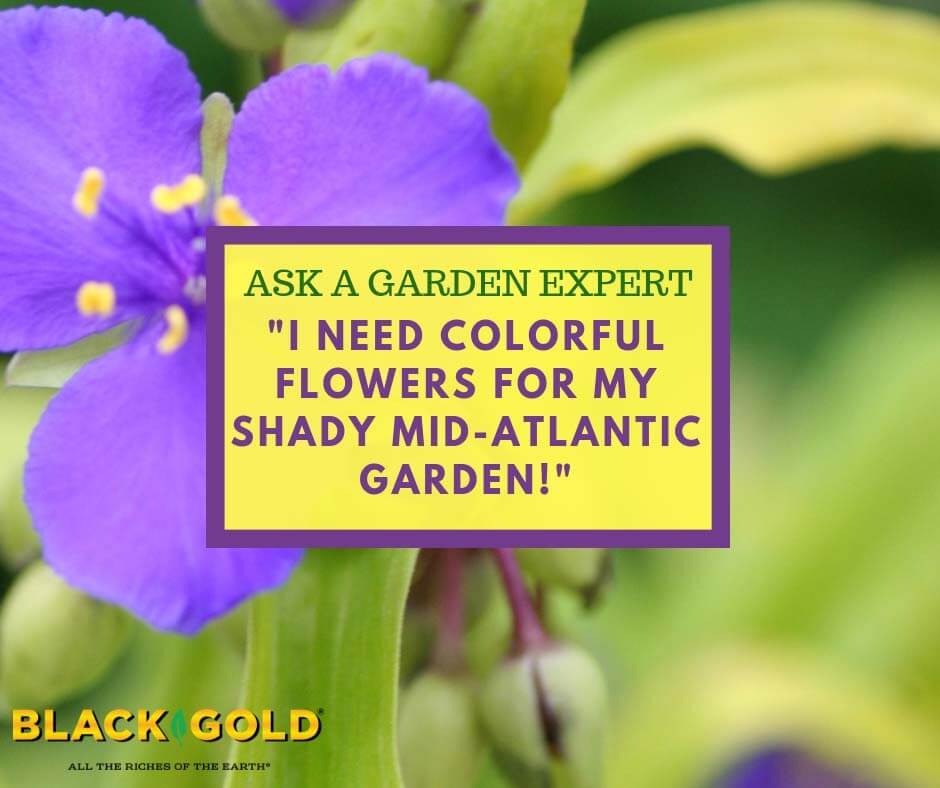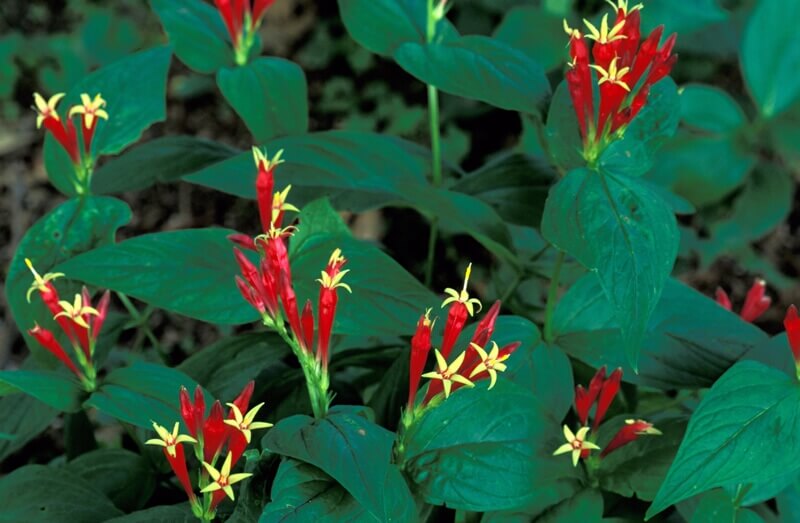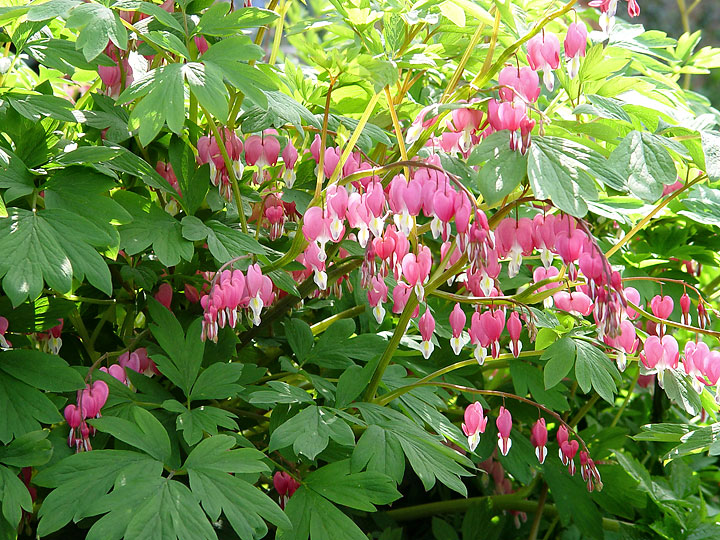
Ferns give shade gardens a wistful, woodland look. Most die back after a hard frost, but a few remain evergreen for continued color though winter. Species range from resilient North American ferns to forest dwellers of Europe and Asia, but natives look most at home in American gardens. When planted in swaths, among other perennials, they create a protective winter blanket around the sleeping crowns of their counterparts.
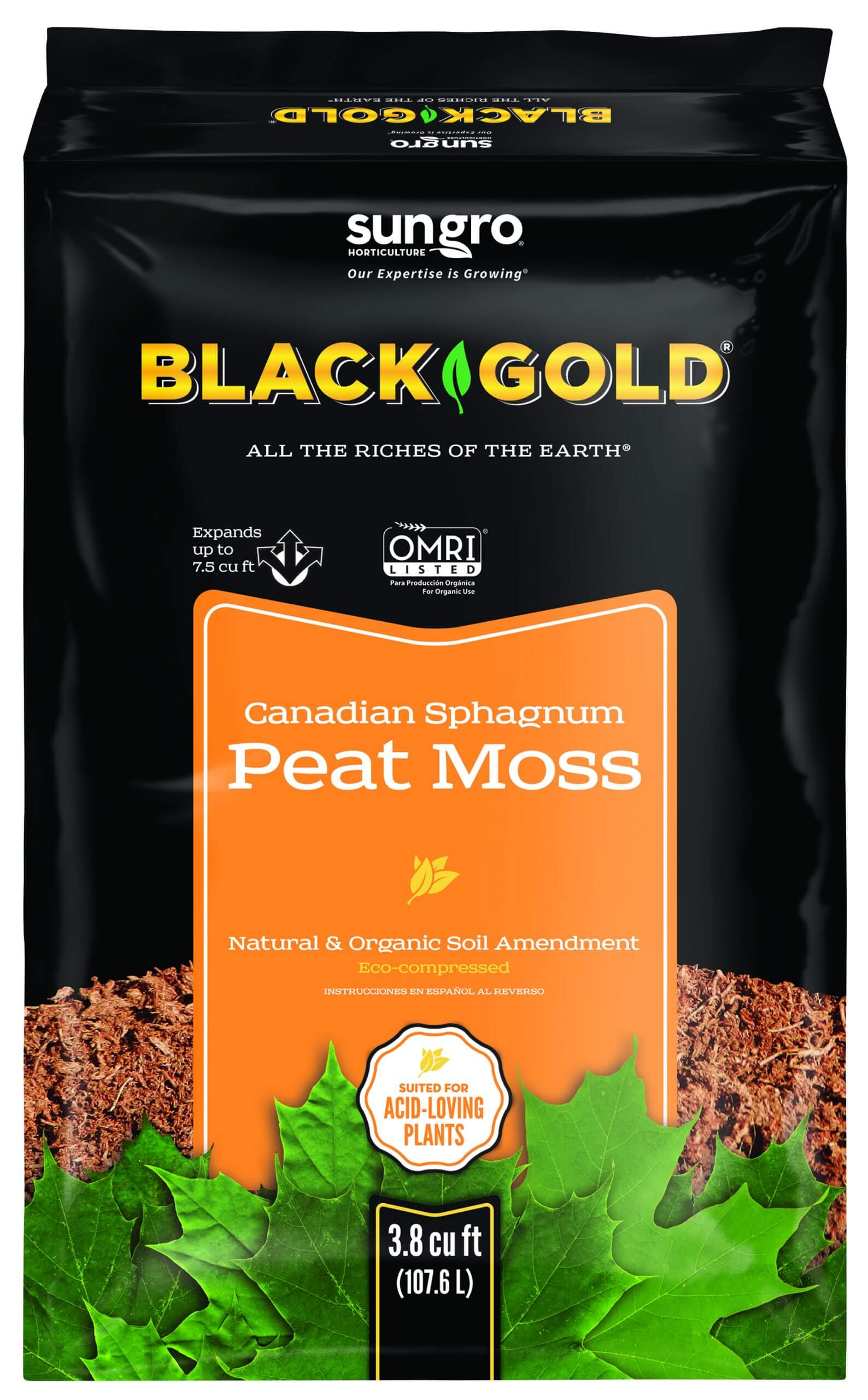 Evergreen ferns are diverse in appearance. Some are huge and dramatic, while others are small and delicate. Each lends its own design possibilities and will stand out in your beds through the cold months. In early spring, cut back winter-worn foliage to allow fresh fronds to unfold.
Evergreen ferns are diverse in appearance. Some are huge and dramatic, while others are small and delicate. Each lends its own design possibilities and will stand out in your beds through the cold months. In early spring, cut back winter-worn foliage to allow fresh fronds to unfold.
Culture varies from species to species, but as a group, evergreen ferns generally grow best in full to partial shade and fertile moist to average soils fortified with garden compost, though a few are surprisingly drought and sun tolerant. Many favor slightly acid soils, in which case peat moss would be the preferred garden amendment. The following list of seven species encompasses an array of showy options from across the country.
Select American Evergreen Ferns
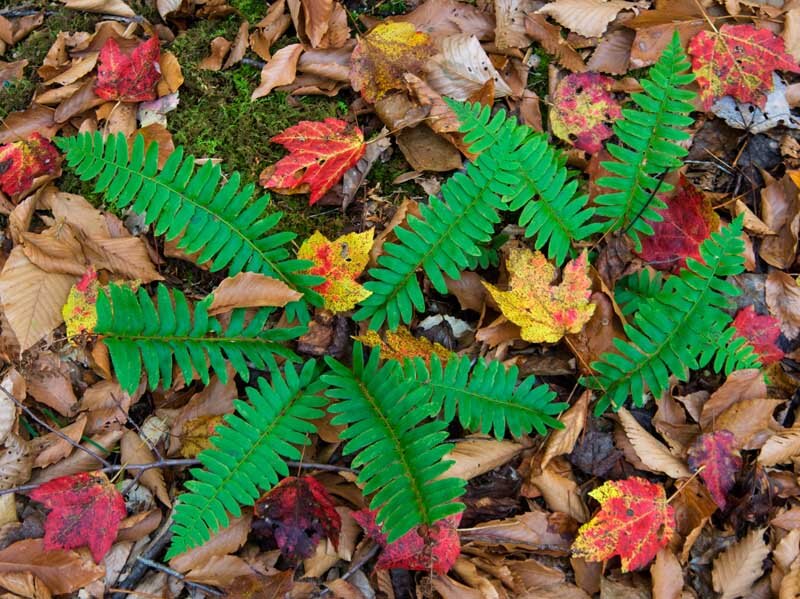
Christmas Fern (Polystichum acrostichoides, USDA Hardiness Zones 3-9) is a tough eastern fern that blankets forest floors with green all winter long. It thrives in moist, fertile soils but also grows along shaded rocky uplands where conditions are tougher and water more scarce. The broad clumps have simple dark green fronds that remain upright from spring to fall but flatten when winter hits and snow presses them to the forest floor. Plant this one in masses.
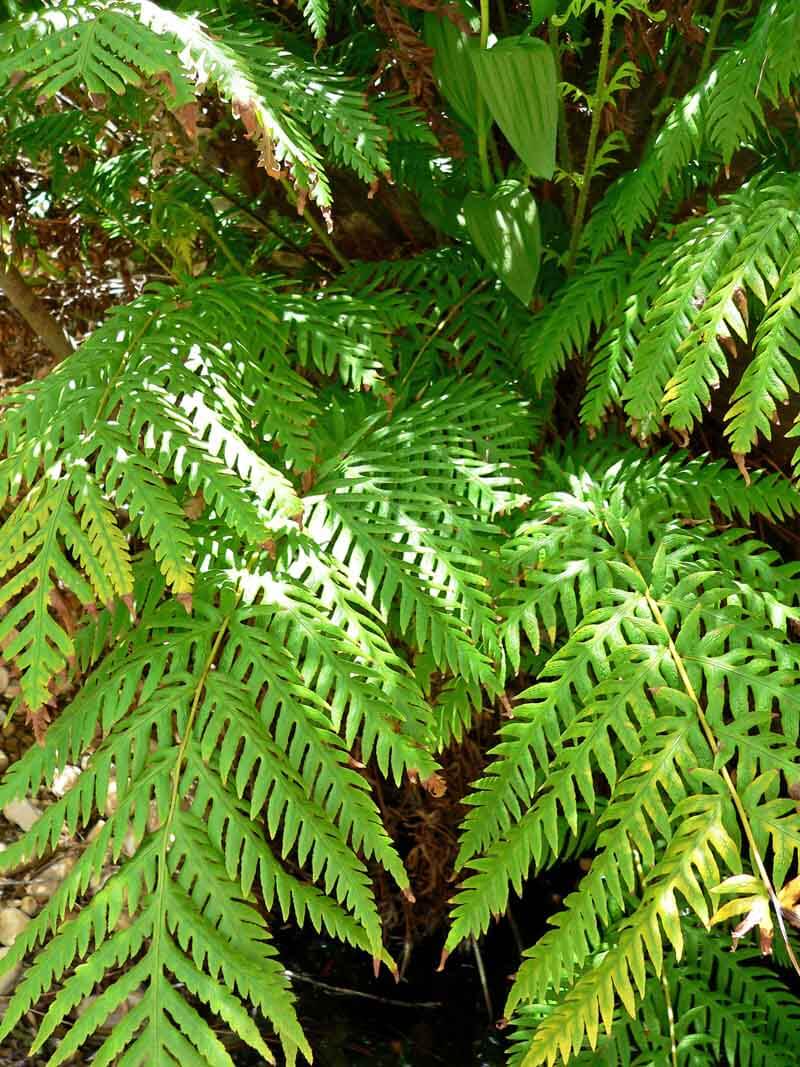
Giant chain fern (Woodwardia fimbriata, Zones 7-10) is the largest of the North American ferns and naturally grows in forests from Arizona to British Columbia. The big, impressive fronds, which can reach between 4-8 feet high and 9 feet wide, lend spacious gardens a primordial look. Sites with partial shade and moist soil are preferred, but once established, this fern can be surprisingly drought tolerant. Don’t plant this one with shy perennials. The biennial Korean giant angelica (Angelica gigas, Zones 4-10) is a beautiful compliment that will grow in partial shade and produces giant, deepest purple domed flowers that reach 6 feet. The 3-6 foot golden Japanese spikenard (Aralia cordata ‘Sun King) is another potential complement. Cut back flagging fronds before the growing season takes off.
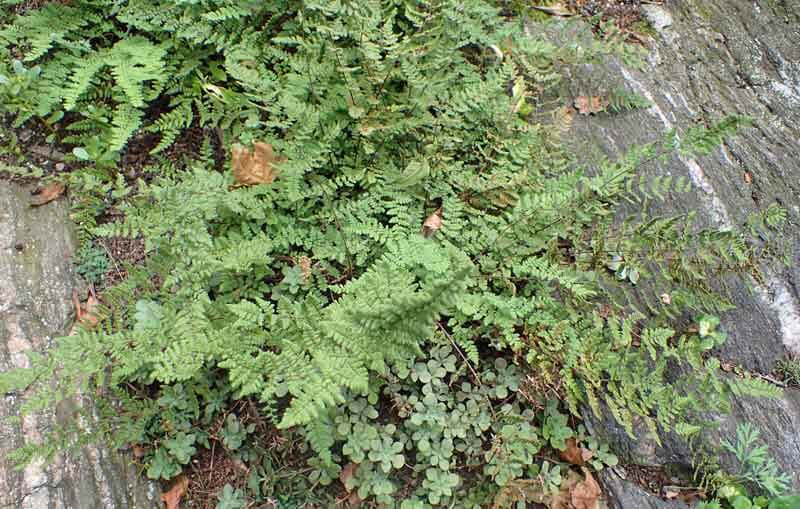
Hairy lip fern (Cheilanthes lanosa, Zones 3-8) favors rocky outcrops in the eastern US. It reaches a height of 8 inches but will spread up to nearly 18 inches. Unlike many other ferns, it also grows well in full to partial sun. Its fuzzy fronds look attractive through winter. Any stone wall or rock garden would benefit from the addition of this charming fern. Plant it in slightly acid or alkaline soils that are porous and well-drained with some organic matter.
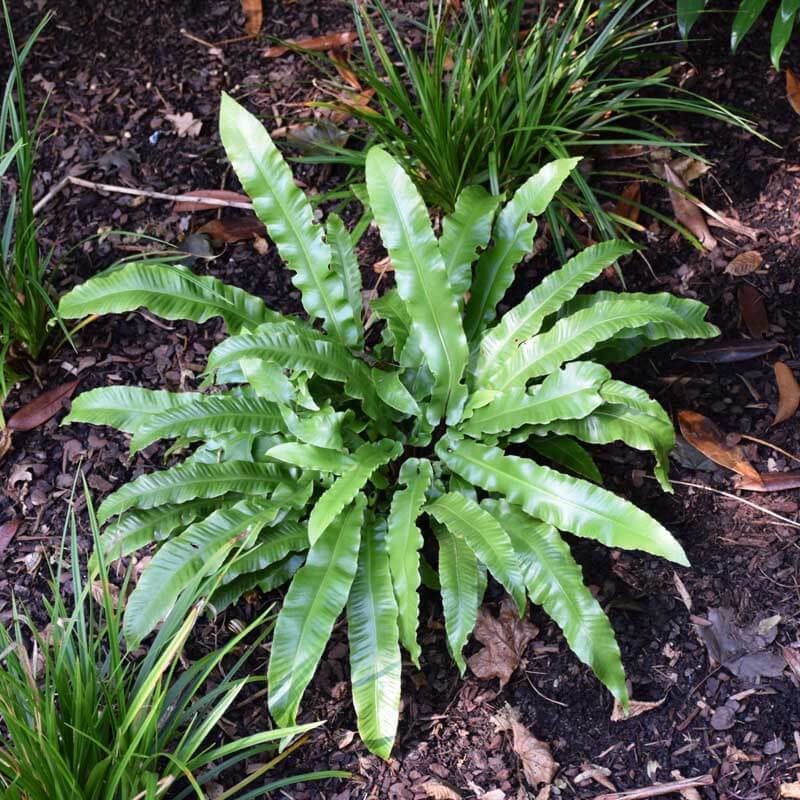
American Hart’s Tongue Fern (Asplenium scolopendrium var.americanum, Zones 5-9) fronds lack indentation, which makes them look like green tongues. This eastern species one of the more impressive looking evergreen ferns for gardens, with its upright mounds of bright green foliage that reach 1 to 1.5 feet high. It will spread over time to form a full, broad clump. Grow it in full to part shade in sites with average soils. Plant it with colorful forest bloomers, such as the spring-blooming wild blue phlox (Phlox divaricata) and summer-blooming Indian pink (Spigelia marilandica). Hart’s tongue fern exists across much of the northern hemisphere and is very adaptable. The Eurasian (Asplenium scolopendrium) is the species most commonly found in garden centers, but it is comparable in looks and preferences.
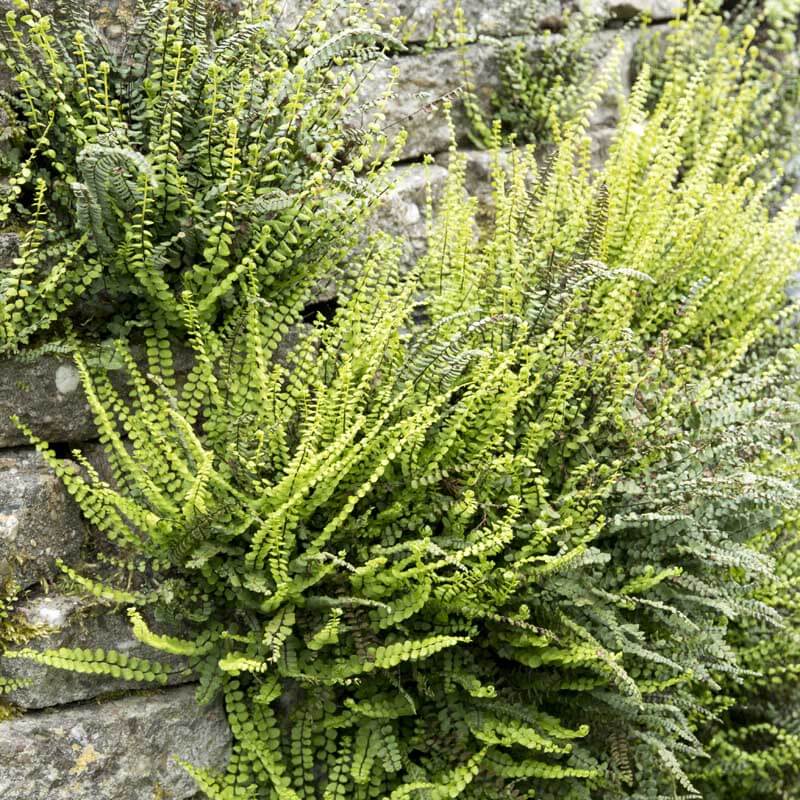
Maidenhair spleenwort (Asplenium trichomanes, Zones 3-9) is another truly lovely, delicate-looking rock fern that is surprisingly tough. Just look at its distinctive little fronds with beads of green. Native populations are widespread across much of the US, Canada, and adjacent Mexico. It tolerates sun and shade and grows well between moist rocky outcrops and woodlands. It forms nice clumps that reach just 4-8 inches. They are slow to grow and spread, so purchase fully grown plants.
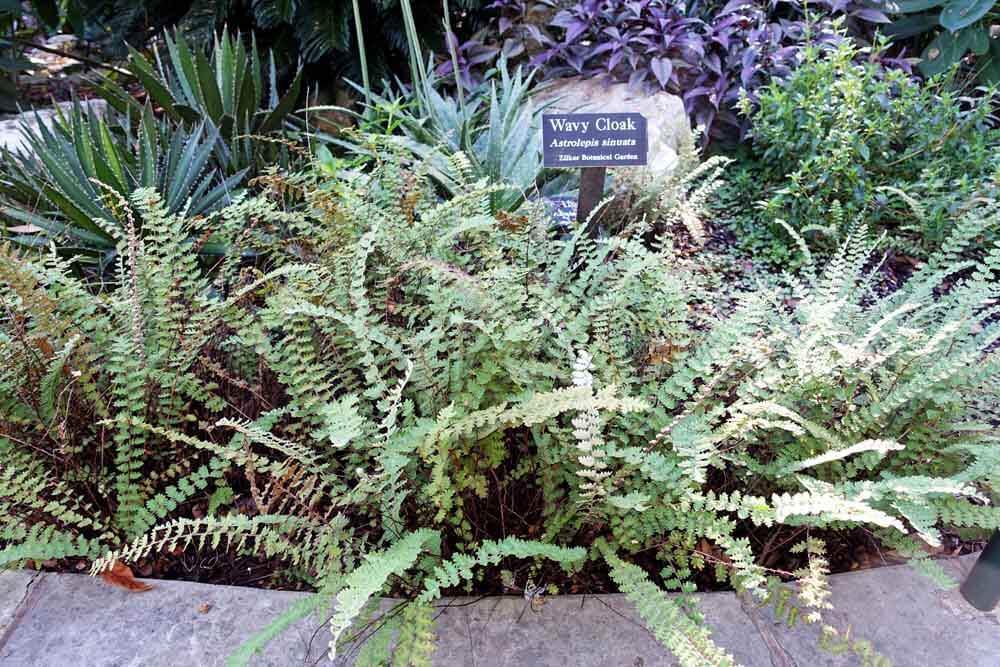
Wavy cloak fern (Astrolepis sinuata, Zones 7-9) Here is a southwestern fern that can tolerant dry conditions and sun as well as partial shade. In the wild, it grows alongside rocks and beneath dryland shrubs. The upright, fine-fronded fern reaches 1-1.5 feet and looks delicate but feels tough and wiry. The leaf tops are dusty green, and the backs are almost coppery. Clumps spread to form small colonies. Plant it with low-growing sedums and drought-tolerant grasses, such as Mexican hair grass (Nasella tenuissima).

Wooly lip fern (Cheilanthes tomentosa, Zones 6-8) is a South-Central US native that can also take drier conditions and full sun to partial shade. It has fine, delicate fronds that look better suited to woodlands than rocky outcrops. It makes a good companion with hens and chicks and drought-tolerant grasses.
Winters look better with a few evergreen ferns to improve landscape color when the snow subsides. Keep in mind that smaller woodland types also look great with spring bulbs and native wildflowers, so plant them together to enliven the spring garden as well. (Click here to read more about early spring bulbs.)



